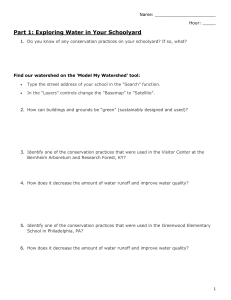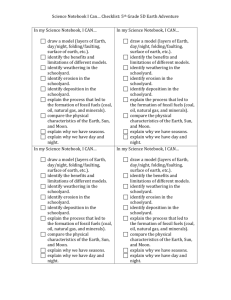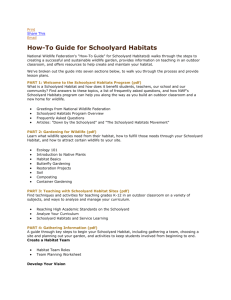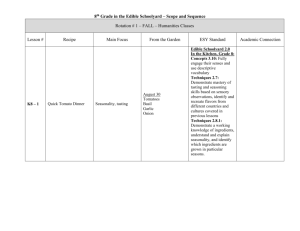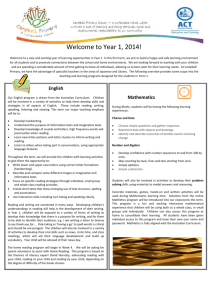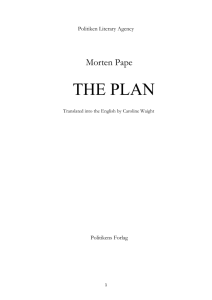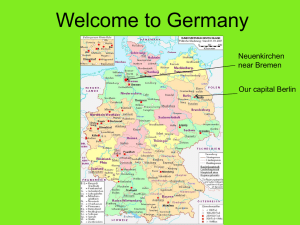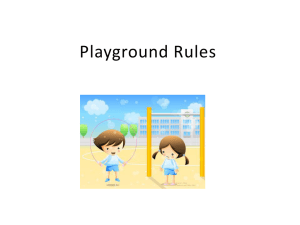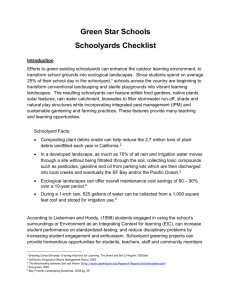Lesson 1 Mapping Activity - CAPSTONE7900-1
advertisement
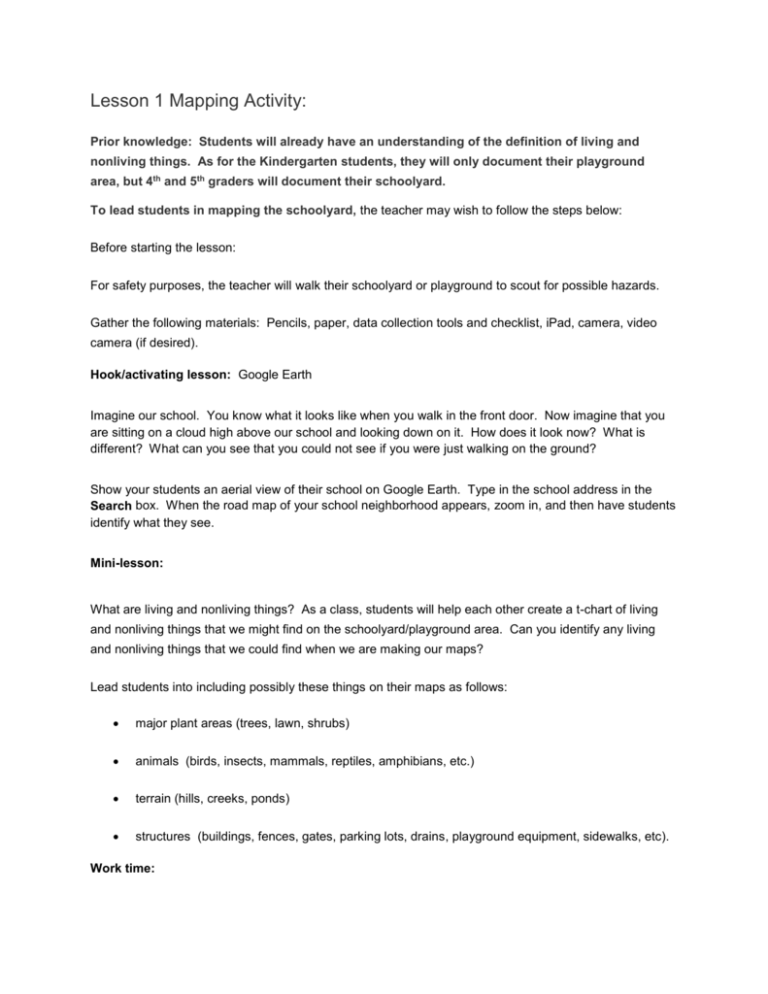
Lesson 1 Mapping Activity: Prior knowledge: Students will already have an understanding of the definition of living and nonliving things. As for the Kindergarten students, they will only document their playground area, but 4th and 5th graders will document their schoolyard. To lead students in mapping the schoolyard, the teacher may wish to follow the steps below: Before starting the lesson: For safety purposes, the teacher will walk their schoolyard or playground to scout for possible hazards. Gather the following materials: Pencils, paper, data collection tools and checklist, iPad, camera, video camera (if desired). Hook/activating lesson: Google Earth Imagine our school. You know what it looks like when you walk in the front door. Now imagine that you are sitting on a cloud high above our school and looking down on it. How does it look now? What is different? What can you see that you could not see if you were just walking on the ground? Show your students an aerial view of their school on Google Earth. Type in the school address in the Search box. When the road map of your school neighborhood appears, zoom in, and then have students identify what they see. Mini-lesson: What are living and nonliving things? As a class, students will help each other create a t-chart of living and nonliving things that we might find on the schoolyard/playground area. Can you identify any living and nonliving things that we could find when we are making our maps? Lead students into including possibly these things on their maps as follows: major plant areas (trees, lawn, shrubs) animals (birds, insects, mammals, reptiles, amphibians, etc.) terrain (hills, creeks, ponds) structures (buildings, fences, gates, parking lots, drains, playground equipment, sidewalks, etc). Work time: In this activity, you will look at your world from a new point of view—an aerial view from up above in the sky—and create a map of your school ground or playground area. Organize students in groups and explain that they are going to create maps of the schoolyard. (Differentiation: groups are allowed to collect data differently). Explore your schoolyard and play ground area. With your group, identify all the living and nonliving animals that you see. Next, collect data about your schoolyard or playground area in order to create a map. Create a rough draft map of your schoolyard or playground area by taking pictures, videotaping, or making a sketch of your schoolyard. Make sure your own map of the schoolyard including structures, terrain, plants, animals, and signs of habitats. Include a map title, map symbols, and a compass rose. Provide students with the rubric so they can use it as a checklist. Ask the students to imagine that they are flying over their schoolyard when they are making their maps. This is called an aerial map view. Review safety with students and ask them to identify some safety issues. Have students work together to draw a map that represents all of the elements outlined in our minilesson. major plant areas (trees, lawn, shrubs) animals (birds, insects, mammals, reptiles, amphibians, etc.) terrain (hills, creeks, ponds) structures (buildings, fences, gates, parking lots, drains, playground equipment, sidewalks, etc). Closure/Summary: Since this lesson will be longer than a normal 50-minute class period, conclude this part of the project by having students share what they have created on their maps so far maps. They can explain some of the major features they found as they explored. At the actually completion of the lesson, have students present their maps to the rest of the class. Do students have any questions about what is around their schoolyard? Do they notice anything about where certain plants and structures are located? Leading students may help them to make connections with how their schoolyard’s living and nonliving things are organized. Lesson extension activities: Have students go to http://science.hq.nasa.gov/kids/imagers/amelia/index.html. Read the story of Amelia the Pigeon and imagine what she sees. Ask students to draw pictures of what Amelia the Pigeon would see if she flew over their home.
